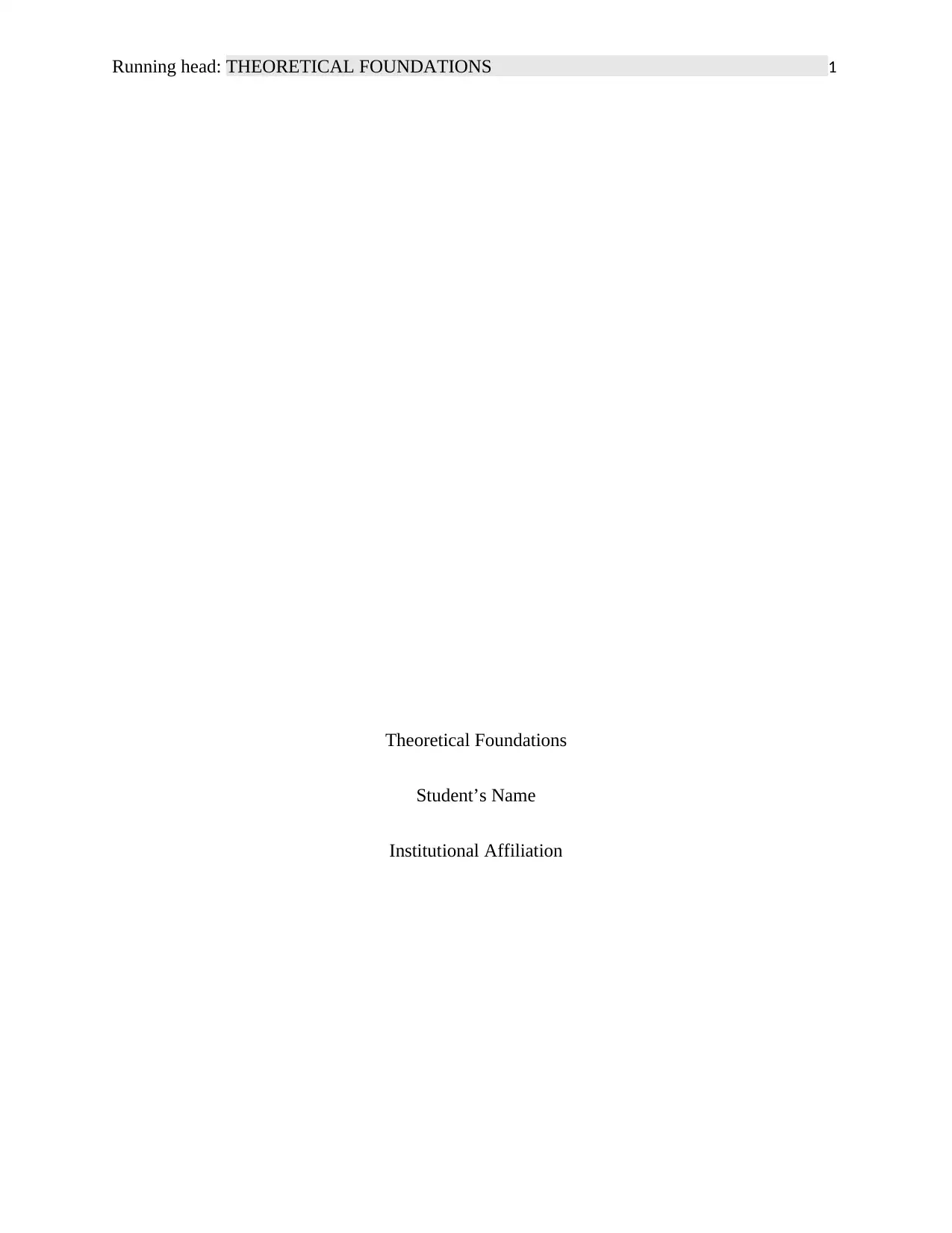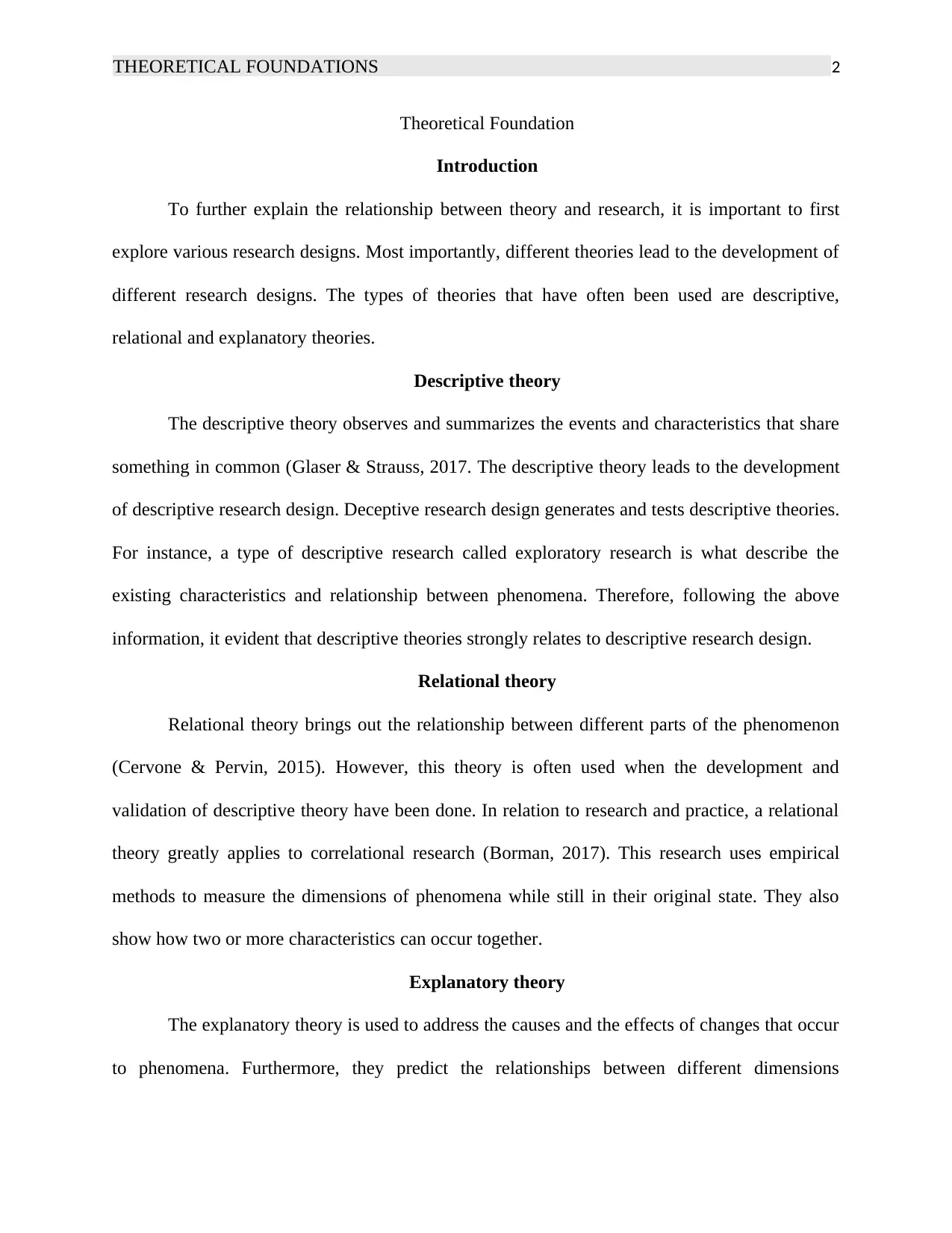NURS 500 Theoretical Foundations Assignment: Theory and Research
VerifiedAdded on 2023/01/19
|4
|464
|58
Homework Assignment
AI Summary
This assignment, focusing on the theoretical foundations of nursing research (NURS 500), explores the fundamental concepts of theory, practice, and research. It begins by defining and differentiating between descriptive, relational, and explanatory theories. The assignment highlights the characteristics and uses of each type of theory, providing examples of how each is applied in research. Descriptive theory is presented as the foundation for understanding and describing phenomena. Relational theory is explained as a means to establish connections between different aspects of a phenomenon. Lastly, explanatory theory is examined in terms of its role in identifying causes and effects within research. Each theory type's relationship to research methodologies is also detailed, with examples such as descriptive research, correlational research, and experimental research. The assignment is designed to help students understand the core principles of theoretical foundations in the context of nursing research.
1 out of 4








![[object Object]](/_next/static/media/star-bottom.7253800d.svg)